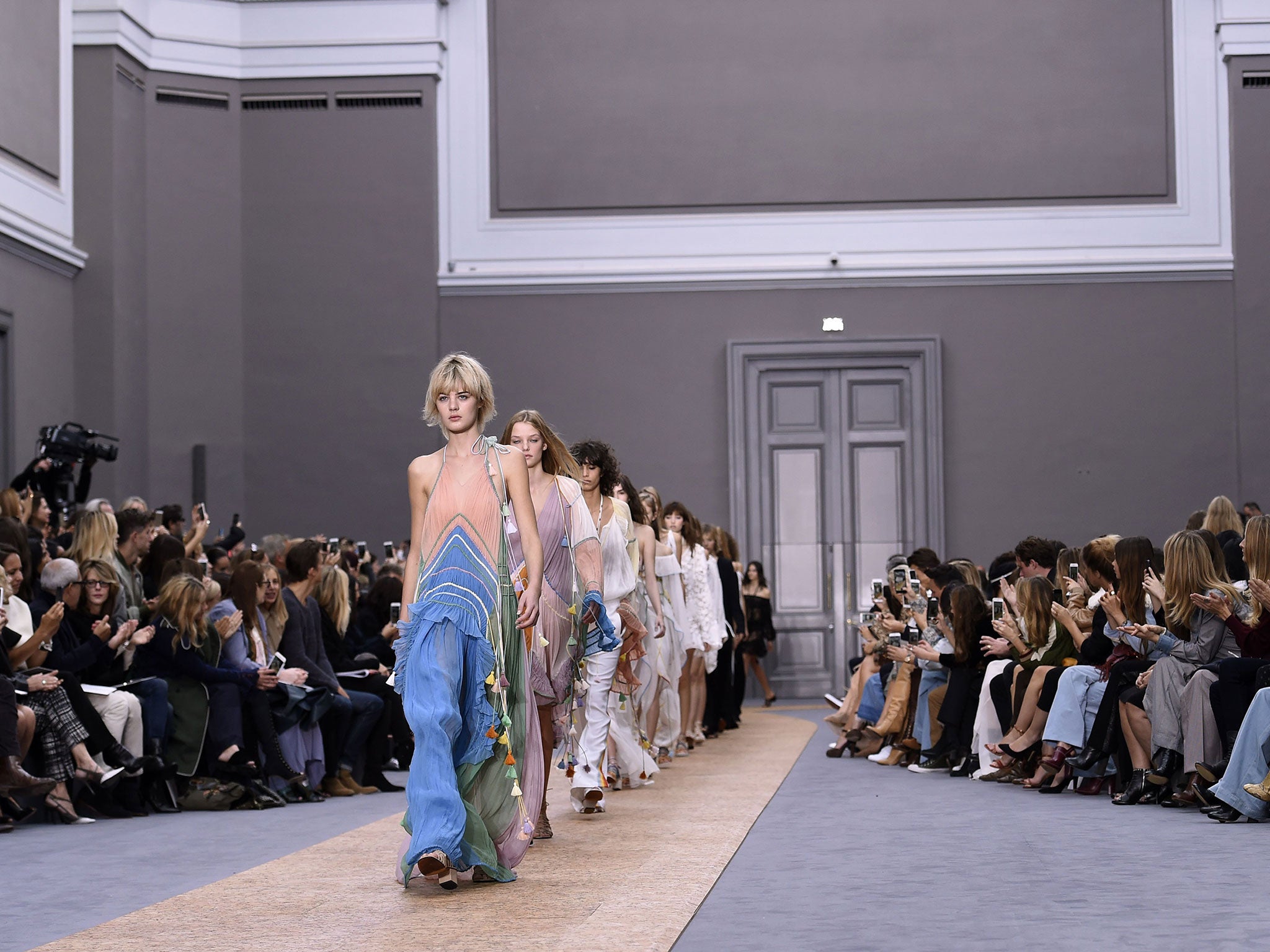Paris Fashion Week 2015: Gender lines were blurred as designers explored sex, meaning and dress codes
The season's best shows thus far have challenged traditional gender codes, while simultaneously challenging us to reassess our own interpretations, as Rebecca Gonsalves reports

Your support helps us to tell the story
From reproductive rights to climate change to Big Tech, The Independent is on the ground when the story is developing. Whether it's investigating the financials of Elon Musk's pro-Trump PAC or producing our latest documentary, 'The A Word', which shines a light on the American women fighting for reproductive rights, we know how important it is to parse out the facts from the messaging.
At such a critical moment in US history, we need reporters on the ground. Your donation allows us to keep sending journalists to speak to both sides of the story.
The Independent is trusted by Americans across the entire political spectrum. And unlike many other quality news outlets, we choose not to lock Americans out of our reporting and analysis with paywalls. We believe quality journalism should be available to everyone, paid for by those who can afford it.
Your support makes all the difference.Sex sells. We all know that. But this spring/summer 2016 season, it's sex-meaning-gender that designers are playing with. The season's best shows thus far have challenged traditional gender codes, while simultaneously challenging us to reassess our own interpretations.
It's not that complicated, really. Just forget asking, “Would a woman want to wear this?” of a collection, and ponder instead the more interesting notion: “Who would want to wear this?” Man, woman, whatever. And at times, designers go so far as to illustrate this precisely: in his collection for Maison Margiela on Wednesday morning, John Galliano used male models in slinky tailoring to remind his audience that androgyny should play both ways. Menswear, for women, shown on men. A twist, on a twist.
In part, these blurred lines are a reflection of the mood in the wider culture as we nudge ever closer to the transgender tipping point. It could be argued, however, that fashion leads the way. It's a mode that's been building for a few seasons, brought about by the likes of Shayne Oliver of Hood by Air, JW Anderson and, most recently, Alessandro Michele at Gucci. They've led the way, convincingly, but other brands are catching on and catching up.
Which means that, when designers do stick to rigid ideas of gender and notions of sexiness, it can fall flat. Maybe that's a reflection of quite how terrifying traditionally “sexy” clothes often are in real life. Or maybe we're just tired of going through those motions, because there's something quite dated about those binary ideas.
Clare Waight Keller's ideas for Chloe are “feminine” through and through – but they're seldom sexy. Perhaps that's because, as a female designer, she knows how often women dress to excite the admiration of other women, rather than men. Yesterday, she sent Edie Campbell out in a claret and camel tracksuit as part of a Nineties rave revival collection – a luxurious version of the sort of thing we all own but few would sport in public.
Whether or not a shellsuit belongs on a catwalk is a debate for another day, but such a traditionally tomboyish item suggests that Waight Keller was also rethinking her ideas of girlishness. She dedicated her collection to, among others, Kate (Moss), Corinne (Day) and Courtney (Love) who “have been redefining what a girl is, and still do, everyday”. And yes, they're rebels all. But in light of the wider conversation about gender, such a statement seems woefully off-message, however well-intentioned and true to the designer's heart.
Because, despite that flowery rhetoric, there was nothing boundary-pushing about this collection. So fans of the brand's hippy-dippy aesthetic will find plenty to love among the chintzy florals and rainbow-edged cheesecloths, the baggy raver trousers and pendulous necklaces perfect for Balearic beach parties come summer. The Nineties theme felt more like a styling sleight of hand rather than a real change in focus; the clothes drifted, but they shifted nothing in terms of the label's aesthetic, nor that wider conversation.
In times of change, designers who aren't leading have two choices: go with the flow of a wider trend (we've seen plenty of Michele-alike grannyish androgyny across the capitals); or double down on what they've been doing up to this point and hope the storm will pass.
Take Olivier Rousteing. While his designs for Balmain are stuck in the past – specifically in Eighties excess – he is still considered one of the most modern designers working today. Fashion's crown prince of social media, he wholly occupies the world of the women he dresses and shares it with his 1.2 million Instagram followers. He's a marketer's dream, as evidenced by his upcoming collaboration with H&M. But when you live and breathe the brand so intensely, it can create something of an echo chamber: there's a danger that no new ideas will be bounced around.
Yesterday, Rousteing attempted to bring the brand forward. While sticking to his signature strong shoulders and skin-tight silhouette, he experimented with featherweight fabrics and a lighter neutral colour palette. Maybe this was an attempt to add a traditional femininity to his fierce femme fatale – to blur the lines and show a softer side to his siren. If so, the gamble didn't pay off. But no matter. Because, remember, whatever one says about gender, sex still sells.
Join our commenting forum
Join thought-provoking conversations, follow other Independent readers and see their replies
Comments